When is a watermelon ripe? Knowing the answer to this question ensures that you enjoy the sweetest, juiciest fruit from your garden. By learning the key signs of watermelon ripeness, you can avoid picking too early or leaving melons on the vine too long, and instead harvest them at peak flavor.
Look at the tendrils near the fruit, check the color of the watermelon’s belly, and inspect the stem for cracks. Each of these indicators signals whether the fruit has reached full maturity. Combining these methods and other cues increases your chances of harvesting watermelons when they are perfectly ripe.
Follow the guidelines below to identify the best time to pick your melons and download a free infographic showing the stages of watermelon ripeness.

When is a watermelon ripe?
Your watermelon patch is spreading like crazy, growing a few feet every day. All of a sudden, you find lots of watermelons.
You think that the time for harvesting them is soon, but how do you know whether your watermelon is ripe?
Here are some tips to help you know when to pick a watermelon.

Check your seed package to estimate watermelon harvest time
Seed packages are a wealth of information. They tell you when to plant the seeds, how far away to space them, and how long they take to grow.
The watermelon harvest time can vary slightly, but most watermelons will be ready to pick 80 to 120 days after the seeds have been planted, depending on their variety.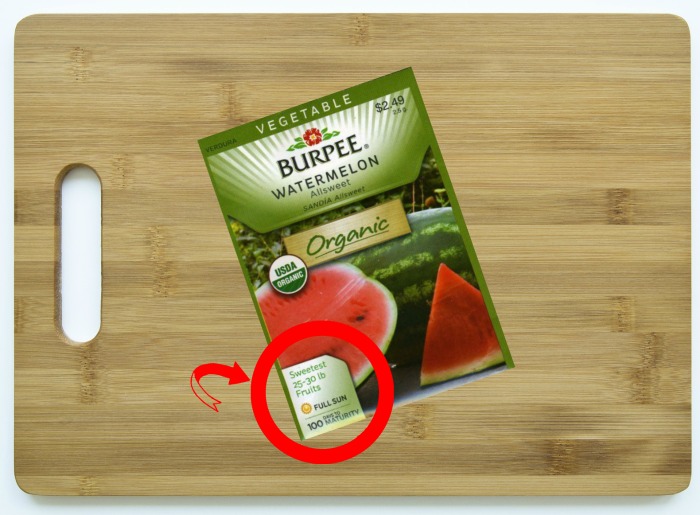
Check the tendrils of the watermelon for color
The curly green pieces growing on the ends of your watermelon vines are called tendrils. They change color when a watermelon is ripe. They will first turn yellow and then change to a brown color.
When this happens, it means the plant is no longer feeding the watermelon, and the time for harvesting watermelons is getting close. If your tendril looks nearly dead, the melon is definitely ripe, and could even be over-ripe.

Look for a crack at the stem
Often, the stem of the watermelon will split on the stem itself just above the top of the melon when the watermelon is ready to pick.
If there is a small crack at this point, it indicates that the fruit is ripe and ready to harvest. Note: You don’t want the watermelon itself to crack. That is usually caused by increases in water intake.

Check the belly color to learn when to harvest watermelons
Watermelons sit on the ground as they mature and their bellies change color. As the plant gets closer to the time for harvesting, the underside will turn from green to white or a yellow color, depending on the variety.
The surface of the melon will also change as it ripens. Instead of a glossy sheen, it will start to take on a dull color.

The thump test tells when to pick a watermelon
Tap the watermelon with your fingers. A ripe watermelon produces a deep, hollow sound. An unripe watermelon makes a sound that is dull and flat.
I have to admit. I’m not the best at this test. It appears my gardening ears don’t differentiate between the thump sound and the “Don’t pick me now, I’m not ripe” sound.

Press on the watermelon to indicate ripeness
Another way to test watermelon ripeness is the press on the watermelon with your fingers or palm. Don’t press too hard, or you could bruise the fruit.
A ripe watermelon will feel firm but will yield slightly under pressure.
Rock-hard watermelons are likely underripe. Soft and mushy ones are likely overripe.
This test is not foolproof on its own. You should combine it with the tendril check, stem and belly inspection, and the thump test.
Look at the stripes to help determine watermelon ripeness
Most watermelons have dark and light green stripes. As the fruit ripens, the dark stripes deepen in color. The contrast between the dark and light stripes also becomes more pronounced.
Uneven stripes can signal uneven ripening. A fully ripe watermelon will usually have stripes that are clear, distinct, and consistent across the rind.
Dull or very pale stipes indicated that the fruit is not yet ripe.
The stripes on a watermelon give subtle clues about ripeness and should be used in combination with the tendril and belly check and the thump test.

Check the size of the watermelon for a clue to ripeness
Most seed packages will tell you what to expect for the size of the melons that will grow from their seeds. Check the expected size, and if your fruit is close, all things being equal, it should be close to being ripe.
The watermelon on the right is more likely to be ripe than the smaller one on the left since it is closer to the size that is expected from the plant.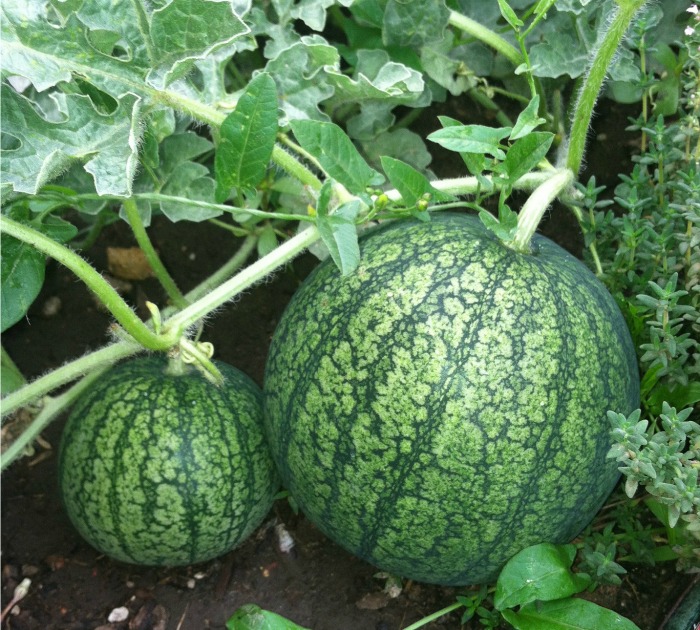
Harvesting watermelons that are ripe does not have to be a guessing game.
If you watch the tendrils, check the belly color, and inspect the stem, along with some other simple tests, you will easily pick watermelons at peak ripeness.
Watermelon ripeness infographic
If you’d like a reminder of these tips for how to know when to pick watermelon, you can print out this watermelon ripeness infographic as a high-resolution image here. You can also get the printable from the project card at the bottom of the post in a slightly smaller size.

Share this post about harvesting watermelons on X
If you enjoyed learning how to tell if a watermelon is ready to pick, why not share these watermelon ripeness tips with a friend? Here is a post to get you started:
Don't know when a watermelon is ready for harvest? 🍉🌱 Learn the signs of ripeness—tendrils, belly color, stem cracks & the thump test! Find out more on The Gardening Cook. 👩🌾✨ Share on XPin this post for determining when is watermelon ripe
Would you like a reminder of this post showing when to pick a watermelon? Pin this image to one of your gardening boards on Pinterest so that you can easily find it later.

Admin Note: This post, first for how to tell when watermelon is ready to pick, first appeared on the blog in August of 2014. I have updated the post with new photos, more tips for ripeness, an infographic to print, and a slideshow video about the type of watermelons to grow.
Printable: When is Watermelon Ready to Pick?

Knowing when to pick watermelon is not just guesswork. There are several hints that your watermelon is ripe.
Print out these watermelon ripeness tips and save them for later.
Materials
- Computer paper
Tools
- Computer
- Printer
Instructions
- Load your computer paper into your printer.
- Using the print function on this card will print a list of watermelon ripeness clues that fills about ¾ of an 8.5 x 11-inch sheet of paper.
- Choose portrait layout and, if possible, "fit to page" in your settings. Doing this will fill the entire page.
- Alternatively, you can use this link to print out these tips to know when to harvest watermelons as a high-resolution image, using the print feature in your browser window.
- Please note: Free gardening printables take a long time to make. This list of watermelon ripeness signs is for personal use only. If you are sharing this infographic (and thank you for that!), please link directly to this post and not to the actual image. We appreciate your help in supporting the site. This printable may not be used for any retail purpose or for mass distribution.
Notes

Recommended Products
As an Amazon Associate and member of other affiliate programs, I earn from qualifying purchases.
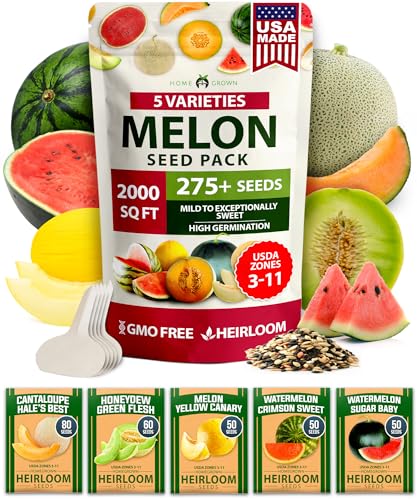
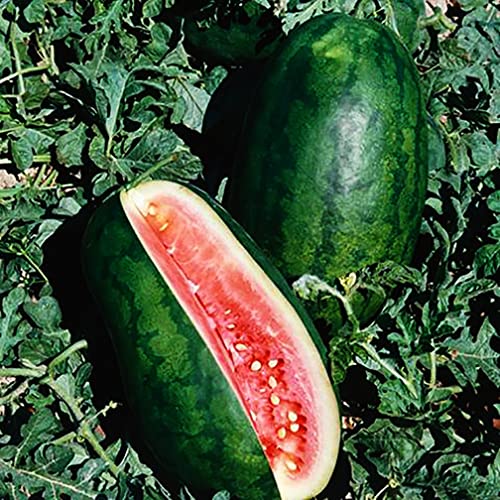
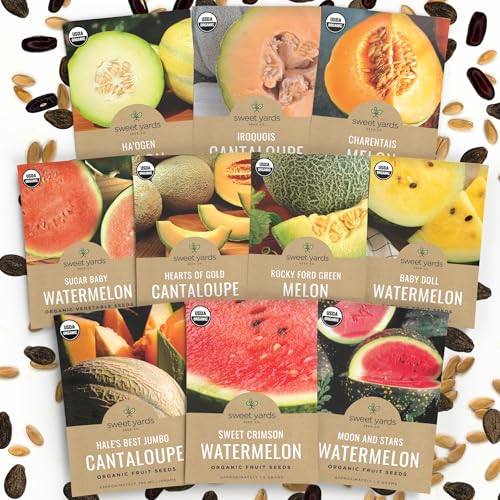
Gretchen
Monday 21st of September 2020
Try using the thump test at the grocery store to get better. I was trained to do this as a child. Comparing multiple melons can give you a feel for what hollow really sounds like and make you look very silly at the store. I bend down to get my ear close and knock with a closed fist. I pick the hollow-est sounding one and take it home. I usually have great results and have even taught my husband and he consistently picks out the good ones at the store too. I am excited to good thump around my garden and see if any of mine are ready and adding the other things to assess should help.
Carol Speake
Monday 21st of September 2020
Great tip Gretchen!
RJ
Thursday 20th of August 2020
It's not a thump, it's a "plunk." You have to "plunk" the melon and it makes a reverb sound and has just a little vibration in it. If it's a "thud," it's over ripe and will be mushy on the inside.
Darryle
Thursday 3rd of September 2020
I am not sure what went wrong my black diamond watermelon was big heavy the spoon leaf and the tendril were brown but was not ripe I live in Chicago and it is sept.3 I don’t know if the rest will survive.
Blake
Thursday 6th of August 2020
I’m under the impression that a deep sometimes thought of as “hollow” sound is overripe and that the thump you are looking for is a tight almost drum like bounce. Almost the opposite of what people think they are looking for! Give it a try!
Kim Blevins
Monday 21st of October 2019
Hi Carol.
Kim here. First time gardener. I planted from a vine, not seeds. That one little vine grew a fairly decent amount vines, complete with leaves and flowers.There was little bee activity for pollination. Lo and behold back in September, my one and only fruit appeared. Which means that it is very late in the growing season. I live in S. Jersey, just across the bridge from PA. My fear is that it won't fully ripen before a series frost sets in. We've already had some nights where the temp has dropped to high 40's°. Any tips that you can pass on to a newbie would be appreciated. Btw... right now the watermelon is about 6 inches long and about 3-4 wide.
Carol Speake
Tuesday 22nd of October 2019
Hi Kim. The only thing I can suggest is to somehow cover the vines when frost is imminent. If you pick the watermelons, they won't ripen any further.
Amir Dori
Sunday 30th of December 2018
You can also use iWatermelon Deluxe. It's an app to detect a ripe watermelon. You simply place your device on the watermelon and tap it 3 times, then after a short sound analysis, the app tells you if the watermelon is ripe or not.
Becky
Saturday 20th of July 2019
This would be great to use at the grocery store if it truly works. Will give it a try. Thanks!